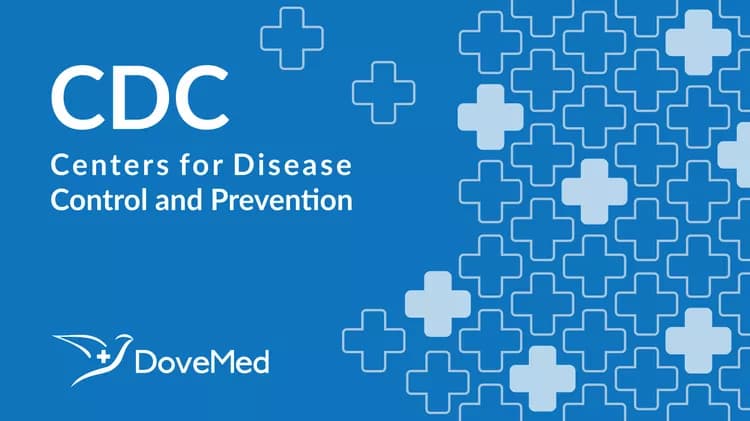
U.S. Syphilis Rates Climbs for Second Consecutive Year
U.S. Syphilis Rates Climbs for Second Consecutive Year
Downward trend among African Americans and women offset by increases among gay and bisexual men
The syphilis rate in the United States rose in 2002 for the second consecutive year, following a decade-long decline that led to an all-time low in 2000, according to new data released today by the Centers for Disease Control and Prevention (CDC).
The increase was due in large part to increases in reported syphilis cases among men, particularly gay and bisexual men. At the same time, continued declines in syphilis among African Americans and women point to the success of STD prevention efforts in some areas and populations, although African Americans remain the population most affected by syphilis.
The data, published in the November 21 issue of CDC’s Morbidity and Mortality Weekly Report (MMWR), include cases of primary and secondary syphilis (referred to as “syphilis cases” in this release). These new syphilis cases represent the early, contagious stage of syphilis infection.
Between 2001 and 2002, the overall rate of syphilis increased 9.1 percent, from 2.2 cases to 2.4 cases per 100,000 population – the highest rate since 1999. The total number of reported cases increased 12.4 percent, from 6,103 to 6,862 cases. However, since some syphilis cases go undiagnosed, the actual number of infections is likely higher.
The increases in reported syphilis cases in 2002 might be due in part to expanded syphilis testing in some areas. However, on a national level, there has been no significant increase in latent syphilis, the later stage of the disease, which would likely occur if increased screening was a major factor nationally.
Syphilis cases among men increased 27.4 percent between 2001 and 2002 (from 4,134 to 5,267 cases). CDC does not collect syphilis data by sexual orientation; however, study authors estimate that more than 40 percent of all syphilis cases reported in 2002 occurred among gay and bisexual men, accounting for much of the reported overall increase in the disease.
By race, the increase in syphilis cases among men included an 85.2 percent increase among non-Hispanic white men and a 35.6 percent increase among Latino men. Syphilis cases among African-American men declined slightly (2.6 percent), but African-American men continue to have the highest rate among men – 13.5 cases per 100,000 population, compared to 4.5 among Latino and 2.2 among non-Hispanic white men.
In contrast, there was a 19.0 percent decline in syphilis among women overall (from 1,967 to 1,594 cases). Cases declined 21.7 percent among African American women (from 1,527 to 1,195 cases).
The continued declines in syphilis among African Americans (10.3 percent in 2002) and among women of all ethnic groups are likely the result of ongoing syphilis education and testing efforts in these populations, especially in the South. Overall, the rate in that region has declined in recent years, and fell by 8.8 percent between 2001 and 2002. However, the syphilis rate among African Americans in 2002 was still 8.2 times higher than among non-Hispanic whites, signaling the continuing need for STD prevention in this population.
“The campaign against syphilis in the United States is now being waged on two fronts,” said Dr. Ronald O. Valdiserri, deputy director of CDC’s HIV, STD and TB prevention center. “We’re working on one front to sustain the progress made among populations formerly hardest hit by syphilis, including African Americans and women. On the second front, we are combating new challenges among gay and bisexual men.”
Recent research has highlighted increases in unprotected sex among some groups of men who have sex with men (MSM), as well as high rates of HIV co-infection among men diagnosed with syphilis (averaging about 50 percent). These findings, plus HIV surveillance data from a recent CDC 25-state study showing a 17.7 percent increase in HIV diagnoses among men who have sex with men between 1999 and 2002, have raised concerns about a resurgence of HIV in this population.
“Prevention challenges for gay and bisexual men may include a low level of concern about other STDs, as well as the belief that treatment advances mean HIV is no longer a deadly illness, resulting in relaxed attitudes toward safer sex practices,” said Dr. John Douglas, director of CDC’s STD prevention programs.
Other New STD Data
CDC also released today new data from the “2002 Sexually Transmitted Disease (STD) Surveillance report.” The STD surveillance report also includes the latest statistics on gonorrhea and chlamydia trends in the United States. Overall, the national gonorrhea rate decreased by 2.7 percent to 125 cases per 100,000 population in 2002 – lower than in any of the previous four years. Chlamydia remained the most commonly reported STD, with 834,555 chlamydial infections reported in 2002. The full surveillance report will be available at the following website on the afternoon of November 20: http://www.cdc.gov/std/stats/toc2002.htm.
# # #
CDC protects people's health and safety by preventing and controlling diseases and injuries; enhances health decisions by providing credible information on critical health issues; and promotes healthy living through strong partnerships with local, national, and international organizations.
Related Articles
Test Your Knowledge
Asked by users
Related Centers
Related Specialties
Related Physicians
Related Procedures
Related Resources
Join DoveHubs
and connect with fellow professionals

0 Comments
Please log in to post a comment.